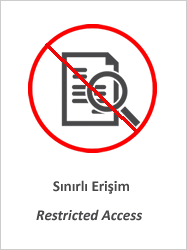Analyzing the User Experience of Virtual Reality Storytelling with Visual and Aural Stimuli
Citation
DUMLU, Burcu Nimet & Yüksel DEMİR. "Analyzing the User Experience of Virtual Reality Storytelling with Visual and Aural Stimuli". 9th International Conference on Design, User Experience, and Usability: Lecture Notes in Computer Science, 12201 (2020): 409-425.Abstract
Storytelling is an integral part of narratives relating to our daily
events, news, personal experiences, and fantasies. While humans have long
narrated their stories, the mediums they have used to do so have evolved over
time through the effects of technological developments: initially, storytelling
was solely oral, then written forms were added, and now, with the effects of new
media, such narratives have also begun to employ photography and video. These
new media tools are also undergoing their own processes of expansion and
development. Today one of the most attention-getting are those using Virtual
Reality (VR) technologies, a means that allows users to experience being-in-thevirtual-
environments, with possibilities of becoming entirely immersed in a
virtual environment. The ability to experience an environment with threedimensional
features enhances the experience in sensorial ways, with simultaneous
stimulation of both the user’s visual and auditory sensorial systems. The
aim of this study is to gain a better understanding of what exactly the user
experiences through VR storytelling. To this end we have conducted an
experimental research based on an examination of the immersive experience in
VR, which constructs the presence feeling. The experiment has been designed to
study the effects on forty users. These participants used the HTC Vive headmounted
display to experience the contents of a story called “Allumette” (designed
by Penrose Studios). User behaviors were recorded and observed by the
tools used to collect data from both the physical world and the virtual environment.
Users’ physical movements were documented as coordinate data,
while the behavioral reflections in the virtual environment were recorded as a
video. Following this virtual experimentation, users were asked to answer a
questionnaire that measured their responses to their VR storytelling experience.
User experience was finally measured by analyzing both the behavioral outputs
of the subjects and the questionnaire. “Cinemetrics” methodology was implemented
to analyze the camera movements, which were considered as the user
behavioral reflections in VR. The results of this study based on analyzing the
behaviors and the reactions to visual and aural stimuli in the VR environment
both lead to a clearer understanding of VR storytelling and uses these results to
propose a design guide for VR storytelling.



















